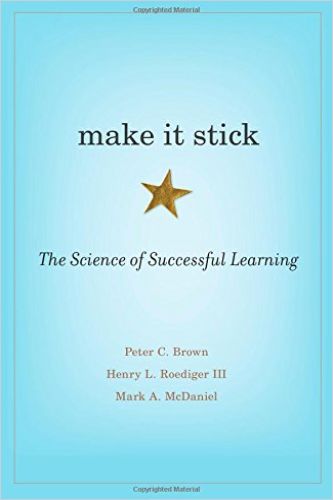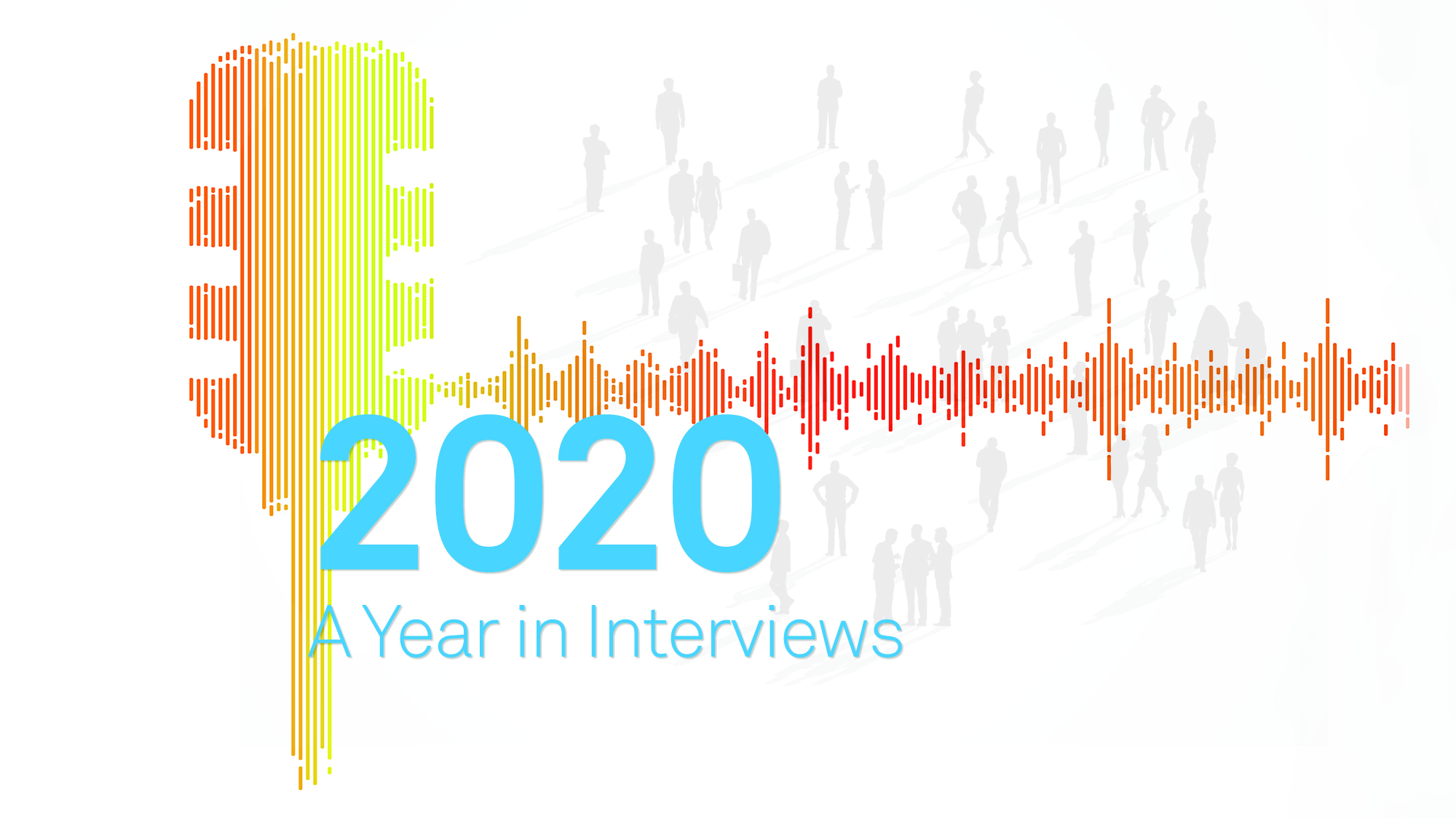“Our Brains Simply Aren’t Designed to Absorb Massive Portions of Complex Information in One Sitting.”

Arguably, demands on employees’ time and the simultaneous need to upskill have never been so high. Imparting actionable knowledge with microlearning courses may be part of the answer, getAbstract’s Jana Eicher explains.
Jana, microlearning has been a defining trend in the L&D space for years. Could you briefly explain what “microlearning” means and how it’s used within companies?
Microlearning is an approach that involves delivering short, bite-sized chunks of knowledge to learners, ideally at the point of need. Microlearning must adapt continually to instill knowledge employees need to succeed, leading to tangible business outcomes.
What are some common examples of microlearning assets that companies might use?
Examples are short explainer videos or job aids presented in infographic form. Anyone who has watched a short “how-to” video on YouTube has essentially engaged in informal microlearning.
What is the optimal timeframe for a microlearning unit?
Opinions differ. Some say no more than three minutes, while others say 20 minutes. What we do know from neuroscience, though, is that the human attention span typically diminishes at the 20- to 25-minute mark while learning. So that should really be the maximum time frame. Either way, a microlearning unit typically focuses on one specific learning objective or single subtopic.
What makes this format beneficial for learning?
From a neuroscientific perspective, keeping learning units short and to-the-point increases knowledge retention. Short learning units are also less likely to overwhelm our working memory or lead to cognitive overload. Our brains simply aren’t designed to absorb massive portions of complex information in one sitting. That’s why “cramming” or “massed practice” is ineffective and only leads to short-term knowledge retention, at best.
What are some common misconceptions about microlearning?
There are two main culprits here. First, there’s the misconception that microlearning is appropriate for all learning contexts. This is definitely not the case. For example, you’re not going to teach someone advanced mechanical engineering skills with a five-minute explainer video. That’s unrealistic. But you definitely could use microlearning assets as part of your broader teaching and learning strategy in this case – for instance, to recap key concepts or provide opportunities for spaced practice.
Short learning units are less likely to overwhelm our working memory or lead to cognitive overload.
Jana Eicher
Secondly, some people think that microlearning units can be created by simply chopping long-form learning content into shorter segments – for example, cutting a 60-minute lecture video into 12 five-minute videos. This misses the point of microlearning. It’s not just about the timeframe, but about designing a clear, focused and targeted learning experience without additional “fluff” or distracting “nice-to-haves.”
From a brain science perspective, what are some must-have elements of an effective microlearning course?
Some well-known, enduring principles in learning science include spaced repetition, interleaved or varied practice, and effortful retrieval. The latter is especially vital for embedding knowledge in long-term memory. Without effective memorization at the foundation, learning can’t meaningfully happen.
I also find the AGES Model helpful for designing “brain-friendly” learning experiences. First, we need to foster attention by minimising distraction. Second, we must provide opportunities for learners to generate meaningful connections between their existing knowledge and the new knowledge. Then, emotion also plays a surprisingly big role: true learning is effortful and even frustrating – so there needs to be a positive driving force to help maintain motivation and momentum. And lastly, as mentioned above, spacing helps with knowledge retention. Meaningful learning – even microlearning – isn’t a once-off event. It’s a process.
What do you consider some of the top readings on microlearning?
My personal favorites, which have also been helpful in designing the Actionables, are Microlearning Short and Sweet and Make It Stick.
In Microlearning Short and Sweet, Karl Kapp and Robyn Defelice give an overview of different types of microlearning (e.g., “performance” versus “pensive” or “preparatory” microlearning) and how they should be used to achieve different kinds of learning goals and address different learning contexts. I think these different categories are very helpful to keep in mind when designing a microlearning experience. One should consider not only “Who is it for?” (learner/audience) but also “What is it for?” (purpose) and “At what stage of the learning journey will it be delivered?” (context). All of these questions should inform how we go about designing a learning experience that helps people retain and ultimately apply their knowledge.

My other favorite, Make It Stick, doesn’t focus on microlearning specifically – but I don’t think it’s possible to design an effective learning experience without understanding how learning works, which this book explains brilliantly. I highly recommend it to anyone who works in an educational role.

How did getAbstract decide to move into the microlearning space?
getAbstract has always been about delivering relevant knowledge at speed, in the form of summarized content from books, articles, videos and podcasts. getAbstract’s goal has always been to make complex information digestible and accessible to customers at the point of need. With such a massive treasure trove of summarized knowledge in its library, getAbstract wanted to go a step further by transforming its summarized content into targeted and action-orientated learning experiences – but without sacrificing digestibility, accessibility and time-efficiency. We designed the Actionables to focus not only on imparting knowledge but on helping learners do something with that knowledge and engage in self-reflection. Our Actionables aim to equip learners to “Know better. Do better.”
Your team conducted two years of research to identify customers’ needs related to microlearning. What common pain points did you identify?
There were certainly key pain points that the team identified. First, working professionals are extremely busy. There are always immediate work priorities to juggle, so they battle to find time for regular learning and upskilling. In the knowledge economy in particular, this is a huge challenge because of how quickly things develop and change. Employees generally want to learn and grow in order to stay relevant and competitive in their field of work. Leaders, managers and L&D professionals similarly want their employees to close knowledge gaps efficiently so that they can excel in their jobs. While there’s an overabundance of online courses available, very few people can realistically commit to hours, days or weeks of study on a regular basis in addition to fulfilling their existing responsibilities.
We designed the Actionables to focus not only on imparting knowledge but on helping learners do something with that knowledge and engage in self-reflection.
Jana Eicher
Time efficiency is certainly a key consideration in workplace learning. Did you identify additional pain points?
Employees want to “learn in the flow of work.” They can’t afford to spend heaps of time away from their work in order to close knowledge gaps related to that work. They must be able to address these gaps at the point of need and without having to remove themselves from the work context – not just physically, but also mentally – for long periods of time. So, if I’m preparing to deliver an online presentation tomorrow and want to know how to use my body language in a virtual setting, I probably won’t want to sign up for a comprehensive 10-hour public speaking course that starts next month. I want that specific nugget of knowledge immediately and without having to put my work on hold.
What are decision-makers and L&D leaders looking for regarding workplace learning?
Those at the top want workplace learning to result in measurable behavior change. From a business perspective, knowledge acquisition is essentially useless if it doesn’t result in on-the-job application and the achievement of quantifiable business results. That’s why, from the get-go, we were committed to creating a learning product that wasn’t simply “entertainment in disguise” – i.e., engagement without impact. We wanted to transform the knowledge captured in getAbstract’s library into highly time-efficient, applicable and effective learning experiences to enable measurable professional growth at speed.
Meaningful learning – even microlearning – isn’t a once-off event. It’s a process.
Jana Eicher
You’ve collected continuous client feedback while designing the prototype for the Actionables. What was some of the common feedback you received that influenced the design of the Actionables?
The team took a highly product- and data-driven approach to developing the Actionables. When creating the first micro course prototypes, we were trying to figure out how to keep our “time-saving” promise while still providing enough depth in the content. Depth and applicability were topics that came up very often in the feedback – our pilot users were very clear that they didn’t want superficial or overly generalized content. Similarly, they wanted quiz questions that were challenging and effortful. So, this is something we prioritized and addressed quite early on.
Actionables put a lot of emphasis on knowledge application. What tools do you use to motivate learners to put their learnings into practice?
Our Actionables follow a “Know-Do-Reflect” loop. After completing the initial 15-minute micro course (“Know”), the learner is presented with an expert-led, concrete call to action (“Do”), where they are given a practical task or guidelines to put their knowledge into action right away. This is followed by a reflection on how it actually went (“Reflect”) – what worked well, what didn’t work so well, and what could be improved next time. So, learners are encouraged to keep practicing and refining their skills after completing the Actionable. This is also crucial for knowledge retention and for learning in general. We need to get hands-on and refine our skills through both successful application and through making mistakes – which serves as a springboard for meaningful self-reflection, practice and improvement.
We wanted to transform the knowledge captured in getAbstract’s library into highly time-efficient, applicable and effective learning experiences to enable measurable professional growth at speed.
Jana Eicher
You launched the Actionables 6 months ago. What has your experience been so far? Have there been any surprises regarding learner behavior and early learner feedback?
I wouldn’t say that there have been any major surprises so far – we have done our “homework” and identified the key pain points in the early stages of product development. Currently, it’s interesting to monitor user behavior at a more granular level, and finetune both our learning content and our user experience based on that data. We ask questions like, Where do users tend to drop off? What’s the quality of the inputs that learners share during the reflection step? From there, we develop hypotheses and try to find solutions as needed. It’s always very humbling, because data doesn’t lie – and that’s how we like it.
Are you going to evolve the Actionables further?
Yes. The industry, technology, user needs, learning science and best practices are fast-evolving. The deployment of ChatGPT and the subsequent explosion of generative AI tools onto the market is a prime example. Product development is something that we treat as an ongoing process, and the Actionables will likely continue to evolve in line with customers’ needs. But first and foremost, we pinpoint customer problems and derive product-driven solutions based on that – not the other way around. This is why data is so vital.
What’s in store for the Actionables in the near future?
The most immediate thing on our agenda is to focus on the tools to finetune the existing offering to deliver on our promise of efficient and effective learning. Here, we’ll also focus on tools like our expert-led live sessions as well as our chat-based virtual guide, which helps learners pinpoint how to apply their learnings to their own lives. These tools are carefully designed microlearning assets that work in a complementary way to deepen the overall learning experience. We’ve already put together some solid MVP versions and will continue to refine these as needed. Of course, we’ll apply the same product- and data-driven approaches here as well to ensure that these tools deliver on promise.
Check out Actionables, our newly developed microlearning courses that help learners put the must-have insights from our summaries into action!







